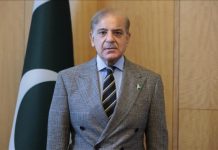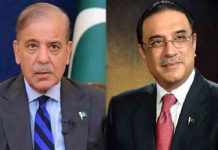DM Monitoring
Three weeks ago, the Indian state took yet another delegation of foreign envoys on a tour of Kashmir, the disputed region it has placed under a devastating lockdown since illegally revoking its autonomy in August last year. Mass incarcerations, torture and the longest digital siege ever imposed in a democracy mean that daily life for most Kashmiris has now become a dire struggle.
The purpose of these rent-a-diplomat tours is to shore up a narrative of normalcy in Kashmir. But as I saw images of carefully choreographed meetings with officials, spooks, businessmen and newly birthed political stooges, I thought of other places of interest that the delegates might be persuaded to see, should they or others like them visit again. Since I happen to know Srinagar – the city of my birth and youth – probably slightly better than, let’s say, the visiting French envoy and his handlers, I suggest you start in the immediate vicinity of the majestic palace-turned-hotel where the international delegates – brought in to see Kashmiris, with their own eyes, no less – were forced to stay.
Take a short walk around the hills here and you could take photos of a gorgeously redecorated building known as Papa II or Fairview. This was one of the most notorious torture centres where detained Kashmiris suspected of involvement in insurgency against Indian rule were subjected to unspeakable torture in the 1990s. It has since been redecorated and turned into an official residence where Kashmir’s last chief minister lived. A few echoes of those tormented inside might ring faintly, but what’s a postcard-pretty, old villa without fitting sound effects?
Not too far from there, you could visit the beautifully appointed guesthouses and hotels in which various species of Kashmiri politician have been kept as grumpy guests of the state. They won’t talk freely, as it’s kind of illegal in Kashmir, but, hey, those codes of modern democracy and freedom of speech, as practised in Berlin or Paris (and sometimes in Delhi), need not apply to an indigenous people in a faraway mountainous region.
If you like your medieval towns full of exotic charms, a quick detour into the Martyr’s Graveyard of Srinagar – where a cross-section of those slain by India’s armed forces over the years are buried – could get you face-to-face with lots of Arabesque gravestones. You must recite Rumi here.
Just a few minutes from the Dal Lake, where you grudgingly had to take photos as you reclined in the traditional Kashmiri water taxi, you could go on a historical walk in the labyrinths of the old city.
Here you could embark on a tour of the families who have lost their boys and girls to Indian bullets over the years. But if seeing memorial rooms of loss and death so soon after selfies at an idyllic lake isn’t your cup of tea, you could speak to living victims, those who have dark holes in place of eyes. Please note that it might be rude to ask your hosts how and why these kids were blinded.
In the photos posted by a news agency which is known for its alacrity in reporting lovely things for the state, one couldn’t see any common Kashmiris.
But worry not, the next time you go, you could ask your local fixers to find a funeral and join in with prayers for the soul of the departed.
To see ordinary Kashmiris, of all shapes, sizes, and ages, you need not even visit Kashmir. Many are scattered across north Indian prisons – most have not been charged, and do not have robust legal aid – providing a real chance to talk to people in their natural habitat.
You must then visit the only psychiatric hospital in Srinagar. Here you can find your average distressed native anywhere you look, as the incidence of deep trauma among us has risen because of the long siege of our earthly paradise. Previously, only one in two Kashmiris suffered from some form of post-traumatic stress disorder; now, you will have to politely ask your hosts, who imposed the siege six months ago, about the curve of that statistic.
The envoys might deserve some credit for their assiduous devotion to the great Indian democracy roadshow. It’s not the first time that European diplomatics in India have made themselves useful on the Kashmir front. In 2013, the then German ambassador, Michael Steiner, put on a concert for the conductor Zubin Mehta in a picturesque garden on the shores of Dal Lake. We were told it was to bring peace and harmony to the people of Kashmir. Attended mainly by spooks, bureaucrats, officials, politicians and a few fawning journalists, the concert ended up resembling a dark skit straight out of a war comedy: hours before the concert a motorist was shot and wounded for failing to obey orders to stop. Meanwhile in south Kashmir, four Kashmiris were killed by Indian paramilitaries, as the invitation-only guests listened to rhapsodic orchestral music in a walled garden surrounded by soldiers with semi-automatic weapons.
Tourist envoys have occasionally visited Kashmir to examine, ascertain and report on we are told, what Kashmiris really want, despite Kashmiris having for years written in blood that they want azadi, to self-determine their destiny. As one is unable to compute how boatloads of foreign and Indian delegates are going to help, one is compelled to conclude that it may just be a good old freebie, a fully paid trip to one of the most beautiful places on the planet.
Advertisement
It doesn’t matter that Kashmiris have been subject to conquistadorial silencing, to surveillance that brings to mind the Stasi, to torture and mass incarceration, suppression of assembly, a draconian internet shutdown, the crushing of their free press, the devastation of their economy, the crippling of the education system, the criminalisation of speech (those who’ve been set free have literally had to sign “bonds of silence”) and the gagging of their civil society.
It doesn’t matter that the natives are being punished en masse. You can always keep them out of the frame, as a young Afghan counsel to India gleefully did during the latest PR expedition, when he told reporters: “Everything is normal and alright here. We saw children on the way to their school, which is a sign of normalcy.” This is a curious statement: schools and colleges in Kashmir are firmly shut during the long and harsh winters. It doesn’t matter that everyone in Kashmir knows this is a state-crafted sojourn. It clearly didn’t matter that the young Afghan diplomat ended up saying precisely what his hosts in Delhi wanted to be said.
Because that was both the job description and the objective.




